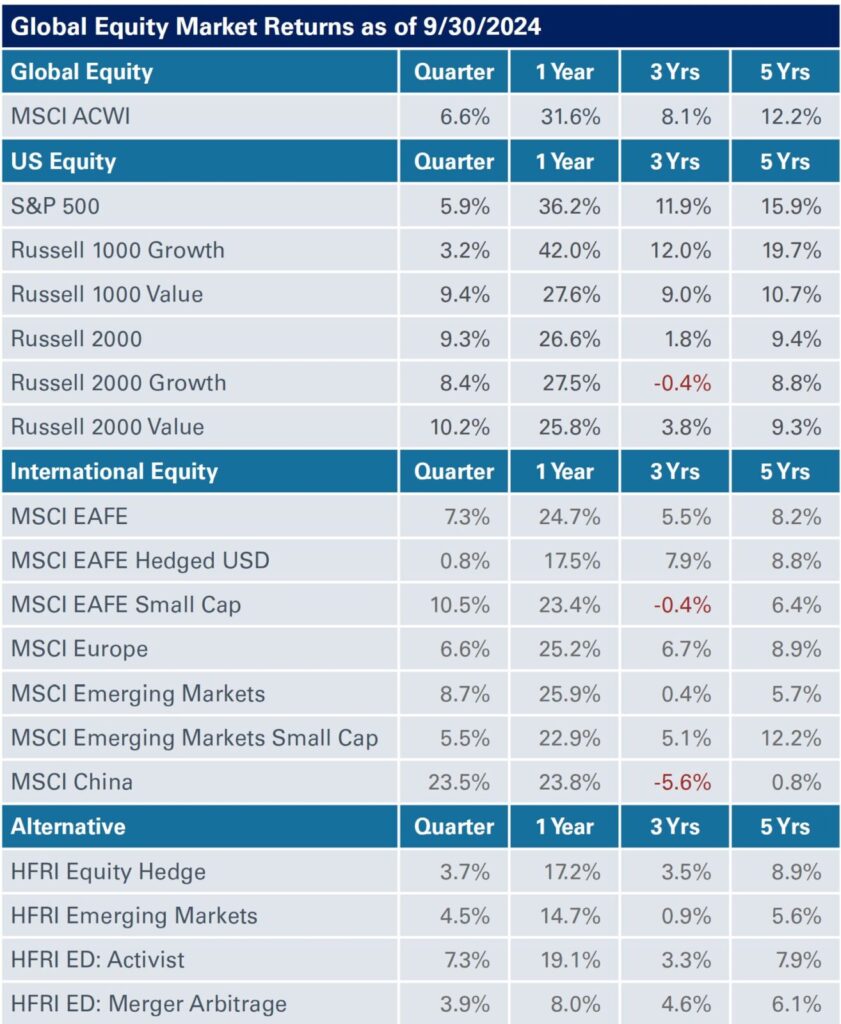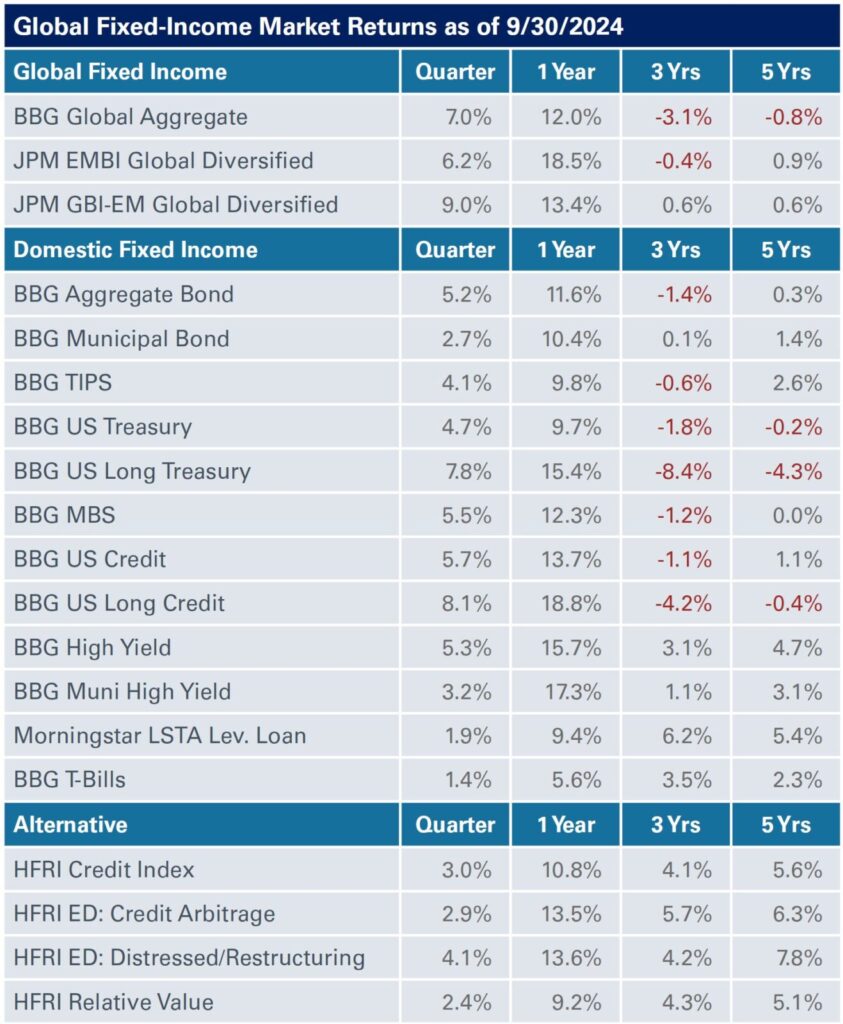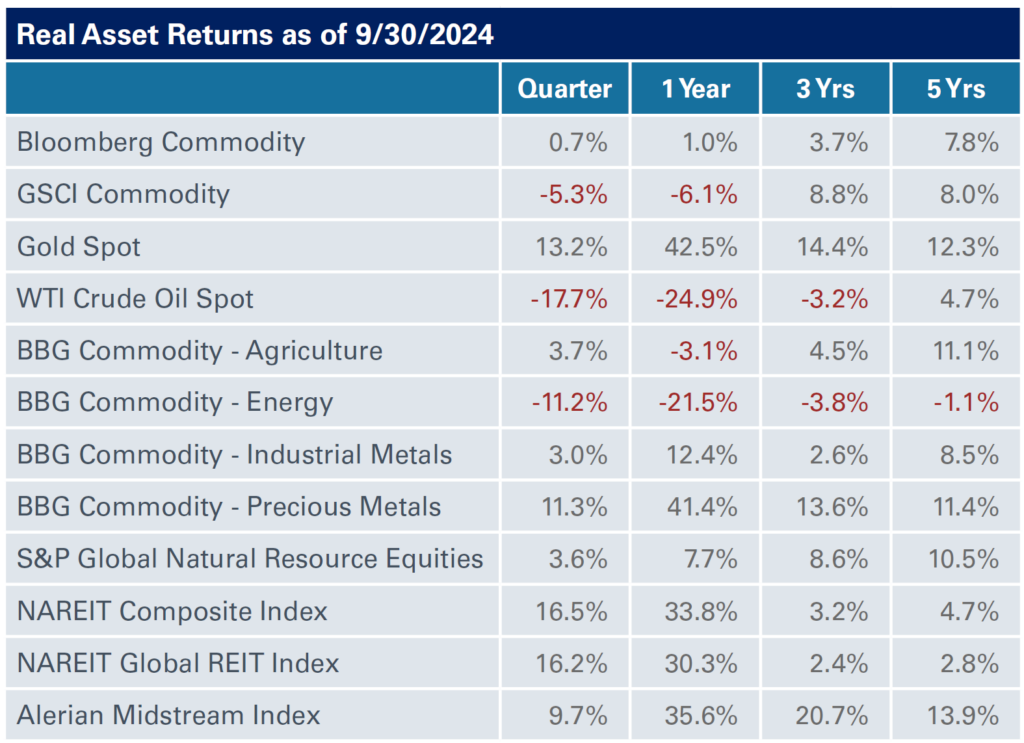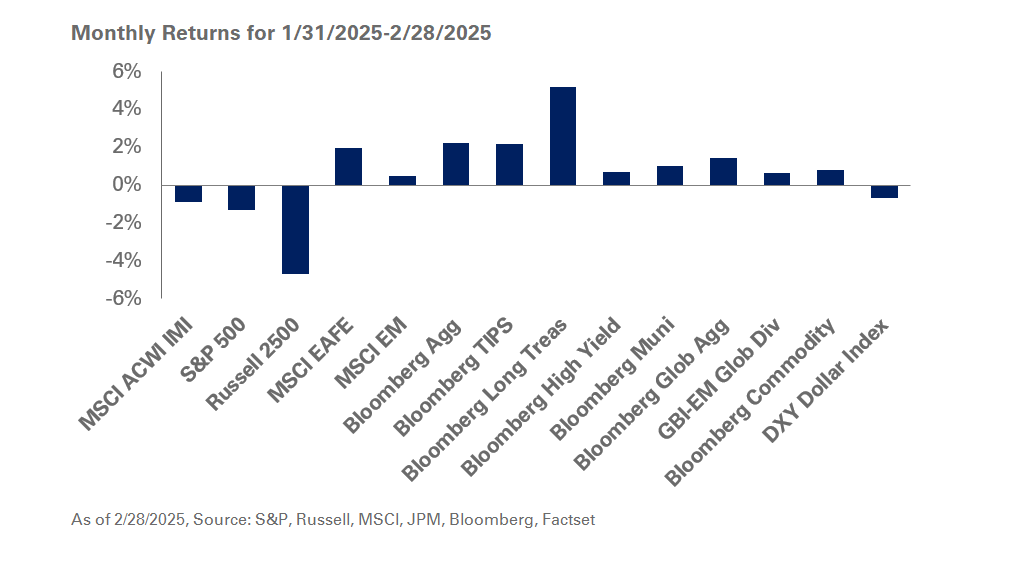Global Equities
Equities rallied in the third quarter with the S&P 500 Index advancing 5.9% and the Russell 2000 Index returning 9.3%. Outside the U.S., international and emerging market stocks also posted strong gains. Emerging markets outperformed with China leading the charge following news of its robust stimulus package; the MSCI EM Index surged 8.7%, and the MSCI China Index soared 23.5% in the three months ended September 30. Additionally, the MSCI EAFE Index finished the quarter up 7.3%, with sectors such as financials benefiting from rising rates, and strong returns in industrials and healthcare.
Meanwhile, U.S. private equity fundraising activity totaled $236.3 billion in the nine months ended September 30, according to PitchBook, currently outpacing the pre-pandemic fundraising average from 2017 and 2019 of $278.1 each year. U.S. venture capital fundraising rebounded in the third quarter with a total of $65.1 billion raised so far this year and is on track to exceed both 2023 and pre-pandemic levels. Total funds raised remain below historical norms, with 220 private equity funds and 380 venture funds closing fundraises in the first nine months of 2024, compared to 574 private equity funds and 839 venture funds in 2023.
New deal activity in U.S. private equity increased to $650.2 billion in the third quarter, driven by growth equity/expansion deals and a moderate increase in leveraged buy-out transactions. The U.S. private equity market is on track to surpass $860 billion in deal value in 2024, up from $705.0 billion in the prior year. Exits in private equity-backed companies totaled $107.1 billion across 394 exits in the third quarter. U.S. venture deal activity hit a five-quarter low with $10.4 billion generated across 243 exits. Total U.S. venture deal activity reached $68.9 billion in the nine months ended September 30 and is on track to exceed 2023 full year volume of $71.6 billion.
Global Fixed Income

Credit spreads remain at the tight end of their ranges. For the three months ended September 30, the spread on investment-grade corporate bonds tightened four basis points and high-yield corporate bond spreads narrowed 14 basis points. Senior liabilities in collateralized loan obligations (CLO) also remain tight with triple-A spreads finishing the quarter at 124 basis points and mezzanine spreads continuing to hover in the 775-785 basis point range.
Overall, it was a strong quarter for fixed income beta, primarily driven by duration. Shorter-duration and intermediate indexes were in the black in the 3%-5% range over the quarter, while longer-dated—10-to-30-year—investment-grade indexes posted total returns in the 7%-8% range. High yield, bank loans and emerging markets also turned in a positive performance; duration bolstered returns in high yield and emerging markets, while loans lagged due to their floating-rate structure.
Real Assets

Global natural resources were up 3.6% in the three months ended September 30. The S&P Global Infrastructure Index returned 13.4%, bringing year-to-date gains to 18%. NEPC maintains a favorable view of natural resources and infrastructure equities due to the potential for sustained inflation.
Meanwhile, public real asset returns staged a comeback in the third quarter with REITs rebounding; the NAREIT Global REIT Composite Index was up 16.5%, pushing year-to-date returns into positive territory with gains of 12.9%.
Private real estate appears to be turning a corner too: after two straight years of negative quarterly returns, the NCREIF ODCE posted a 0.25% preliminary gross return for the three months ended September 30. The positive total return is inclusive of 0.79% asset depreciation, as overall asset values continue to face challenges. Despite a reprieve from the long-expected rate cut from the Fed, the possibility remains that increased transaction flow could lead to another downward revision to real estate values as price discovery among certain property types could be challenging.
Real estate debt—despite its more conservative position in the capital stack—remains a bright spot as higher interest rates, impending loan maturities, and pullback from traditional lenders have led to higher return expectations that rival potential gains from value-add real estate equity. On the other end of the spectrum, opportunistic and distressed real estate investors may be able to capitalize on these factors to acquire high-quality assets suffering from capital structure issues.
Private infrastructure strategies continue to garner increased interest among investors, and we are particularly constructive on tailwinds driving digital and communications infrastructure, renewable energy and energy transition strategies. We continue to favor private markets when it comes to implementing infrastructure in an investment portfolio.



